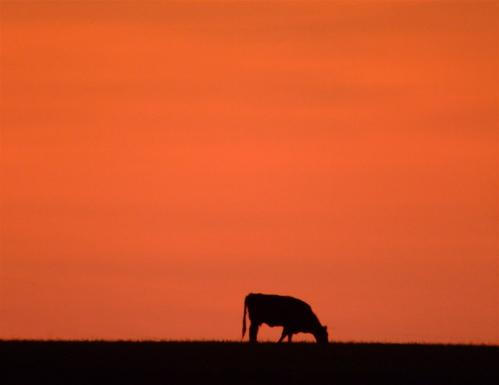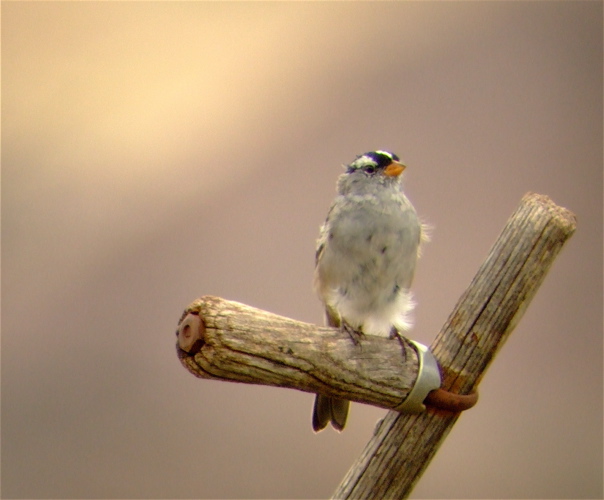 Last week, my neighbor Zoe mentioned she was going to go skydiving with some friends. We've known a few people who have done it and they always seem to end up with a cool video marred by cheesy music like Kenny Loggins waxing musical about the "Danger Zone." Zoe mentioned that she probably would not buy the video and I offered to come along an try to digiscope her with my Swarovski spotting scope and Nikon D40.
Last week, my neighbor Zoe mentioned she was going to go skydiving with some friends. We've known a few people who have done it and they always seem to end up with a cool video marred by cheesy music like Kenny Loggins waxing musical about the "Danger Zone." Zoe mentioned that she probably would not buy the video and I offered to come along an try to digiscope her with my Swarovski spotting scope and Nikon D40.

I arrived early to Skydive Twin Cities (which oddly enough actually jumps in Baldwin, WI) and watched some of the other skydivers and practiced on them. The only thing that was a bummer was the overcast sky. Had it been a sunny day, these shots would have been killer. With my scope, many assumed I was the staff photographer and asked for requests (even though I was dress rather unprofessionally in my MN Roller Girls hoodie).

I thought it would be harder to find the jumpers with my scope, but the colorful chutes were large enough and circled in a fairly predictable pattern that I was able to get the shots I wanted for the most part.

Here's another practice shot. As jumpers were coming down, I realized that they were going up in groups of 6 - 8 and that it would help a great deal if I knew the color of chute to concentrate on my friends as they came down. We did talk to the instructors who would come down with and my friends and they told us the colors and I noted that jumpsuits--my friends had on lighter colored suits so I would be able to find them easier with that too. I did find it amusing that all of the instructors smoked like chimneys between jumps. I supposed if you jump out of a plane 8 times a day, lung cancer doesn't seem that threatening.

It finally came time for my friends to jump and I followed their plane with my scope. Having watched it a few times, I knew the general route the plane would take.

And I was able to digiscope the plane! It was a bit easier to get a plane in flight than a bird--not as likely to get distracted by prey below it like a goshawk would. So I kept my scope on it and my camera at the ready. For the most part, people had left me alone when I was practicing getting shots on the other jumps. This time, when I really needed to concentrate, people started asking me questions or even asking for photo requests of friends. I was probably a little terse in my answers and finally said something to the effect of, "I've been paid privately by other jumpers to focus on them and no one else."

I almost lost the plane a few times as it was right overhead and disappeared in the cloud cover, but I managed to get the last two people jumping from the plane. Turns out the last two to leave the plane were my neighbor and my friend Ben. Above is Zoe free falling and Ben is about to leave the plane--you can see his limbs hanging out the side.

And here goes my friend Ben. Both of these photos were digiscoped from the ground while the plane was at 13,000 feet! Pretty darned cool! Again, I'm bummed with the cloudy and dark conditions but at least these are souveneir photos for my friends.

Here are a couple of other free fallers. These ended up being the camera guys who film you during the jump.
 Here are my friends coming down. That's Ben in front and Zoe in back. Incidentally, that Ben is Ben San Del a local stand up comedian--he's very funny, I loved his show this summer A Nice Guy's Guide to Awkward Sex. Non Birding Bill and I are going to watch him open for Emo Phillips in November. Perhaps he will work in some skydiving humor? The instructor told me the wrong color for Ben's chute but thanks to my scope's clarity, I was able to pick out in his chute early on.
Here are my friends coming down. That's Ben in front and Zoe in back. Incidentally, that Ben is Ben San Del a local stand up comedian--he's very funny, I loved his show this summer A Nice Guy's Guide to Awkward Sex. Non Birding Bill and I are going to watch him open for Emo Phillips in November. Perhaps he will work in some skydiving humor? The instructor told me the wrong color for Ben's chute but thanks to my scope's clarity, I was able to pick out in his chute early on.

This has opened up a new world of digiscoping to me. I hope to go back on a sunny day--sounds like Ben and Zoe are game to do it again. Apparently, when it comes to skydiving, no one does it twice. You either do it once and never again or you do it for the first time and come completely addicted.
What other non birding things can I digiscope?







 Last week, my neighbor Zoe mentioned she was going to go skydiving with some friends. We've known a few people who have done it and they always seem to end up with a cool video marred by cheesy music like Kenny Loggins waxing musical about the "Danger Zone." Zoe mentioned that she probably would not buy the video and I offered to come along an try to digiscope her with my Swarovski spotting scope and Nikon D40.
Last week, my neighbor Zoe mentioned she was going to go skydiving with some friends. We've known a few people who have done it and they always seem to end up with a cool video marred by cheesy music like Kenny Loggins waxing musical about the "Danger Zone." Zoe mentioned that she probably would not buy the video and I offered to come along an try to digiscope her with my Swarovski spotting scope and Nikon D40.







 Here are my friends coming down. That's Ben in front and Zoe in back. Incidentally, that Ben is
Here are my friends coming down. That's Ben in front and Zoe in back. Incidentally, that Ben is 
 One of the things I was counting on to give me an edge over Clay in our
One of the things I was counting on to give me an edge over Clay in our 









